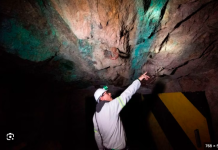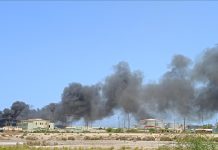
/
RSS Feed
Southern Africa is currently enduring one of the worst droughts in living memory, with nearly 70 million people facing severe shortages of food and water. In northern Zimbabwe’s Mudzi district, the once-flowing Vombozi River has turned into a dry riverbed, forcing the local community and their livestock to dig deep into the sand in a desperate search for the last remaining drops of water.
The situation is dire across the district, with rivers and dams dried up, leading to an influx of people converging on the riverbed in Kurima village, further straining the limited water resources. Along the parched riverbed, small holes barely large enough to fit a bucket are being used by families for bathing, laundry, and watering cattle.
Gracious Phiri, a 43-year-old mother of five, now spends three hours each day walking to collect water. As she lowers her bucket into a half-meter wide hole, she draws up brown, murky water. “The cattle drink from the same pit as us. Their urine is right there… it is not very healthy,” she says, worried about the health of her family. “I have never seen anything like this.”
Food shortages are equally alarming in Zimbabwe, where 7.7 million people are facing hunger. In Mudzi, the number of families with access to sufficient, affordable, and nutritious food has plummeted by more than half compared to previous years, according to local health authorities. Children are particularly vulnerable, with hospital admissions for moderate to severe malnutrition doubling since June.

To combat the crisis, a village feeding program has been established. Once a week, women gather to prepare a nutrient-rich porridge for children under five, using ingredients like ground baobab fruit, peanut butter, milk, and leafy greens. However, the list of ingredients is shrinking, with cowpeas and beans recently disappearing due to poor harvests. The program, originally running three times a week, has been reduced to just once a week due to the devastating El Niño-induced drought. Kudzai Madamombe, Mudzi district’s medical officer, warns that the program may be forced to stop altogether as food stocks dwindle.
The drought has also impacted clinics that provide essential healthcare, with boreholes that supply water to a quarter of the district’s clinics now dry. The district’s major dam has only a month’s supply of water left, leading to the suspension of vegetable irrigation schemes that supported 200 local farmers.
The effects of the drought are felt everywhere. Tambudzai Mahachi, 36, recounts planting acres of maize, cowpeas, and peanuts on her plot, only to harvest nothing. Even her usually resilient baobab tree produced hardly any fruit. Once a supplier to markets in Harare, she now relies on handouts to feed her family.
While the village feeding scheme provides food once a week, Mahachi’s children need to eat every day. “We have gone from eating what we want when we want to limiting meals,” she says. “The older girl understands that sometimes we can only have porridge, but at times I can see that my youngest is hungry.”

















